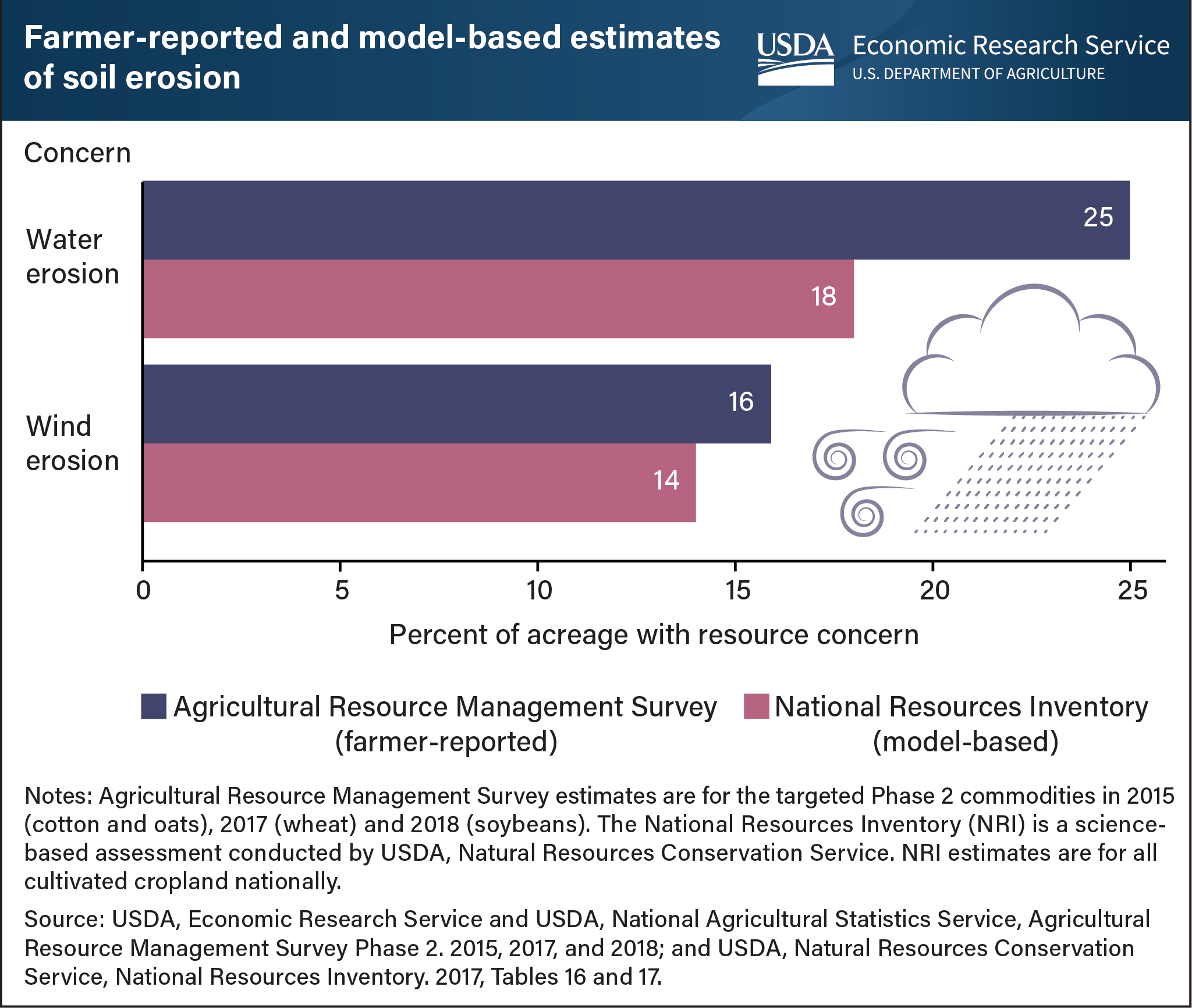Water- and wind-driven erosion affect a large portion of cropland, according to estimates from both model-based and farmer-reported data
- by Andrew B. Rosenberg and Steven Wallander
- 5/20/2022

Researchers at USDA, Economic Research Service (ERS) used the USDA’s Agricultural Resource Management Survey (ARMS) to identify farmers’ concerns about soil erosion on their fields, specifically fields growing oats or cotton in 2015, wheat in 2017, and soybeans in 2018. Across all acreage represented in the selected ARMS data, farmers reported that 25 percent of acres had water-driven erosion and 16 percent had wind-driven erosion. ERS researchers compared these self-reported measures to estimates from the National Resources Inventory (NRI), a science-based assessment conducted by USDA’s Natural Resources Conservation Service. The 2017 NRI found that about 18 percent of cultivated cropland had water-driven erosion. For the NRI, a field is determined as having a problem with water-driven erosion if annual soil losses exceed its soil loss tolerance, which is the maximum rate of annual soil loss that still permits sustained economic crop production. The NRI assessment also found that about 14 percent of all cultivated cropland had more soil losses from wind-driven erosion than its soil loss tolerance. The difference in rates of erosion between the two data sources may reflect farmer perceptions about what is considered an erosion problem relative to the criteria used in the NRI. This chart can be found in the ERS report USDA Conservation Technical Assistance and Within-Field Resource Concerns, published in May 2022.

